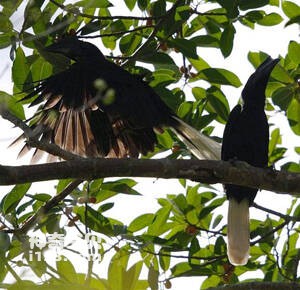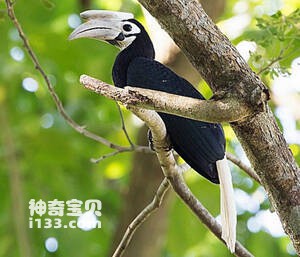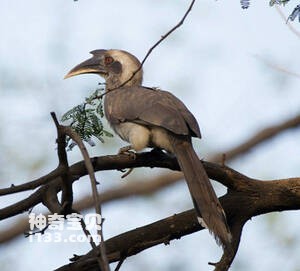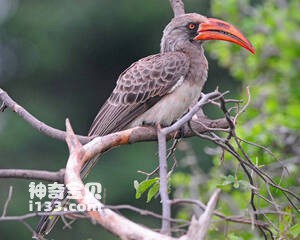
Anthracoceros montani
Anthracoceros montani,Sulu Hornbill
Its scientific name is Anthracoceros montani and its foreign name is Sulu Ho···

Anthracoceros marchei
Anthracoceros marchei,Palawan Hornbill
The Palawan Hornbill, known by its scientific name Anthracoceros marchei and···

Anthracoceros malayanus
Anthracoceros malayanus,Black Hornbill
Anthracoceros malayanus, or Black Hornbill, is unknown.Listed in the Washing···

Anthracoceros albirostris
Anthracoceros albirostris,Oriental pied hornbill,Pied hornbill
The bird, Anthracoceros albirostris, Oriental pied hornbill, Pied hornbill, ···

Anthracoceros coronatus
Anthracoceros coronatus,Malabar Pied Hornbill
Anthracoceros coronatus, Malabar Pied Hornbill, is an Indian pied hornbill.P···

Ocyceros gingalensis
Ocyceros gingalensis,Ceylon Grey Hornbill、Sri Lanka grey hornbill
The scientific name of the Ceylon Grey Hornbill is Ocyceros gingalensis, and···

Ocyceros griseus
Ocyceros griseus,Malabar grey hornbill
The Malabar grey hornbill, whose scientific name is Ocyceros griseus, or Mal···

Ocyceros griseus
Ocyceros griseus,Malabar Grey Hornbill,Indian grey hornbill
The Indian grey hornbill is known as Ocyceros griseus, Malabar Grey Hornbill···

Lophoceros camurus
Lophoceros camurus,Tockus camurus,Red-billed Dwarf Hornbill,Common Grey Hornbill
The animal's scientific names are Lophoceros camurus and Tockus camurus,···

Lophoceros nasutus
Lophoceros nasutus,Tockus nasutus,African Grey Hornbill
The species is known as Lophoceros nasutus, Tockus nasutus and African Grey ···

Lophoceros pallidirostris
Lophoceros pallidirostris,Pale-billed Hornbill
The scientific name Lophoceros pallidirostris, foreign language name Pale-bi···

Tockus hemprichii
Tockus hemprichii,Lophoceros hemprichii,Hemprich's Hornbill
Heinz curved bill Hornbill scientific name Tockus hemprichii, Lophoceros hem···

Lophoceros fasciatus
Lophoceros fasciatus,Tockus fasciatus,African pied hornbill,Pied Hornbill,West African Pied Hornbill
The species is known as Lophoceros fasciatus, Tockus fasciatus, and African ···

Lophoceros bradfieldi
Lophoceros bradfieldi,Tockus bradfieldi,Bradfield's hornbill
Lophoceros bradfieldi, Tockus bradfieldi, and Bradfield's hornbill are e···

Lophoceros alboterminatus
Lophoceros alboterminatus,Tockus alboterminatus,Crowned Hornbill
Its scientific name is Tockus alboterminatus and its foreign name is Crowned···

Tockus deckeni
Tockus deckeni,Von der Decken's Hornbill
Tockus deckeni, also known as Von der Decken's Hornbill, is a tropical, ···

Tockus jacksoni
Tockus jacksoni,Jackson's Hornbill
Jackson's Hornbill is known as Tockus jacksoni or Jackson's Hornbill···

Tockus leucomelas
Tockus leucomelas,Southern Yellow-billed hornbill
The Southern Yellow-billed hornbill is known as Tockus leucomelas and southe···

Tockus flavirostris
Tockus flavirostris,Northern yellow-billed hornbill,Eastern Yellow-billed hornbill
The scientific name of the Northern yellow-billed hornbill is Tockus flaviro···

Tockus monteiri
Tockus monteiri,Monteiro's Hornbill
Its scientific name is Tockus monteiri, the foreign name is Monteiro's H···

Tockus kempi
Tockus kempi,Western red-billed hornbill
Western red-billed hornbill scientific name Tockus kempi, foreign name Weste···
